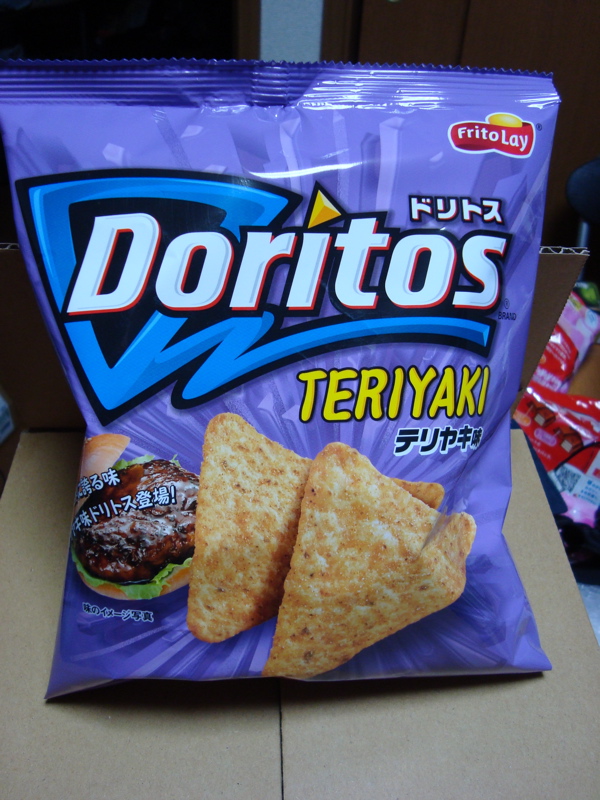
"ピーチグミ" is used to phonetically translate "Peach Gummy," which is the name of these candies. However, why not simply translate "Peach Gummy" from English to Japanese? Even if "gummy" is a loan word, the Japanese have their own work for "peach." My only hypothesis as to why they chose to use katakana for the entire phrase is not only as a loan word, but also for emphasis.
Just as Western cultures, in many ways, have a fascination with all things Eastern (and therefore, exotic), the Japanese, and by extension, Eastern cultures, have a fascination with the West. The popularity of anime and manga in the US, and Johnny Depp and Brad Pitt in Asia are a testament to this. By choosing to phonetically translate "Peach Gummy," Kasugai (the company that makes these candies) makes them seem "cool."

In contrast, a company name like "Doritos" must be translated phonetically into "ドリトス", since there is no direct Japanese translation, making it purely a loan word. However, the flavor that is described "ガーリック", or "garlic," is technically a loan word (since it is a phonetic translation of "garlic") but the phonetic translation of the English word "garlic" as opposed to using the Japanese word for garlic means it is also used for emphasis, just like "Peach Gummy."
What is particularly interesting is the use of カタカナ even when the word is originally Japanese, as shown with テリヤキ, shown below. In this instance, the use of カタカナ is for emphasis.

And, just like in the US, popular culture is sometimes featured on packaging.

A commenter on my previous post hypothesized that perhaps カタカナ was used because there is not enough "real" garlic, or "real" peaches in the snack to be actually called a "garlic chip," and it is actually a "garlic flavored chip." However, I don't think this is the case, since there is actually 30% of peach juice in the ピーチグミ, and its name is still in カタカナ.
While it is easy to spot that カタカナ is used for onomatopoeia and loan words, the use of カタカナ for emphasis is a bit fuzzier. Perhaps this is because it's much like the English way of using italics to emphasize words or phrases—it is almost entirely up to the author's discretion.







